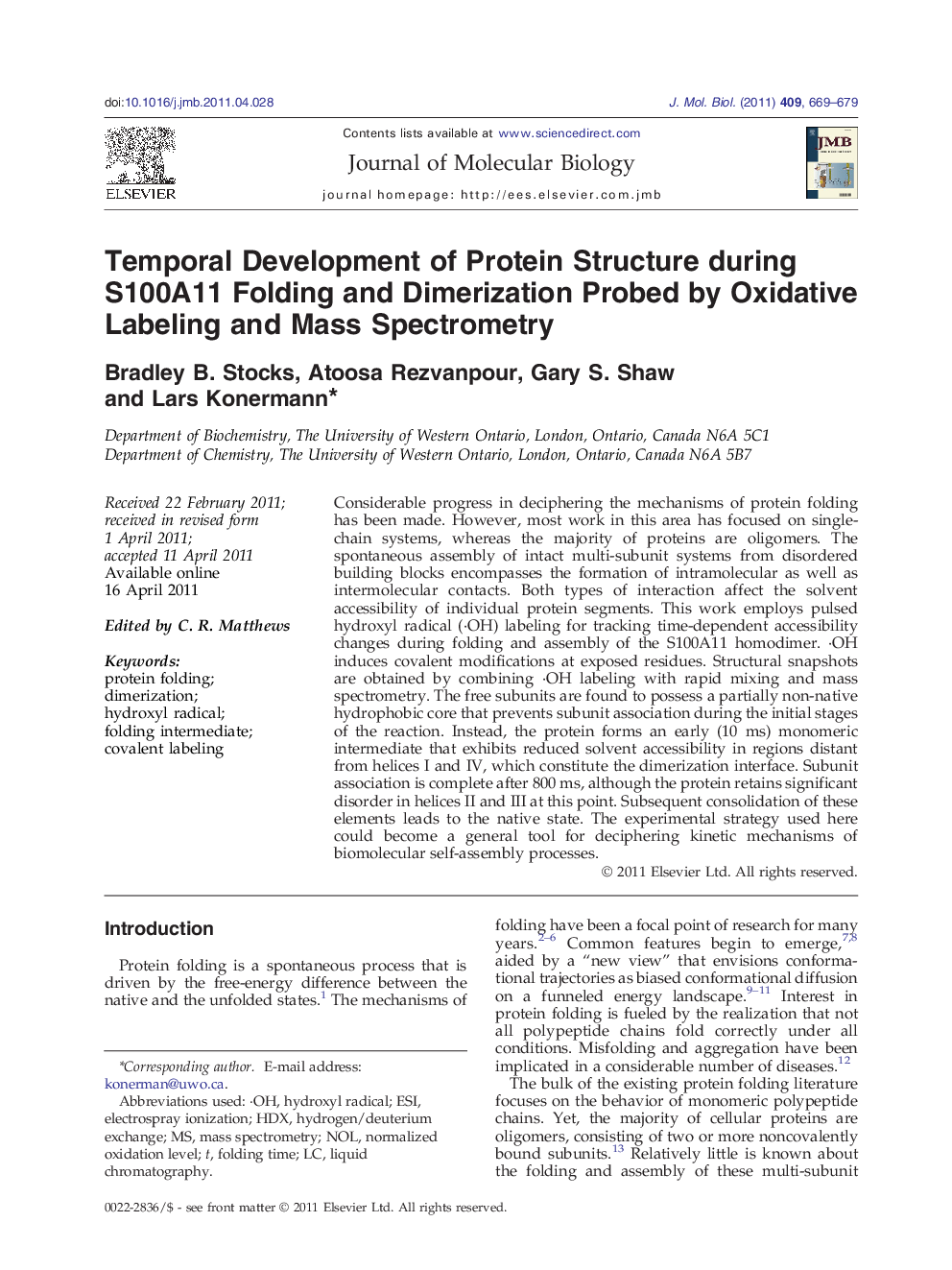| Article ID | Journal | Published Year | Pages | File Type |
|---|---|---|---|---|
| 2185360 | Journal of Molecular Biology | 2011 | 11 Pages |
Considerable progress in deciphering the mechanisms of protein folding has been made. However, most work in this area has focused on single-chain systems, whereas the majority of proteins are oligomers. The spontaneous assembly of intact multi-subunit systems from disordered building blocks encompasses the formation of intramolecular as well as intermolecular contacts. Both types of interaction affect the solvent accessibility of individual protein segments. This work employs pulsed hydroxyl radical (·OH) labeling for tracking time-dependent accessibility changes during folding and assembly of the S100A11 homodimer. ·OH induces covalent modifications at exposed residues. Structural snapshots are obtained by combining ·OH labeling with rapid mixing and mass spectrometry. The free subunits are found to possess a partially non-native hydrophobic core that prevents subunit association during the initial stages of the reaction. Instead, the protein forms an early (10 ms) monomeric intermediate that exhibits reduced solvent accessibility in regions distant from helices I and IV, which constitute the dimerization interface. Subunit association is complete after 800 ms, although the protein retains significant disorder in helices II and III at this point. Subsequent consolidation of these elements leads to the native state. The experimental strategy used here could become a general tool for deciphering kinetic mechanisms of biomolecular self-assembly processes.
Graphical AbstractFigure optionsDownload full-size imageDownload high-quality image (131 K)Download as PowerPoint slideResearch Highlights► We explore the mechanism of a protein folding/dimerization reaction. ► Pulsed oxidative labeling is applied to S100A11 at different time points. ► Changes in solvent accessibility are monitored by mass spectrometry. ► It is found that folding and dimerization are closely intertwined processes. ► Several short-lived intermediates are identified.
